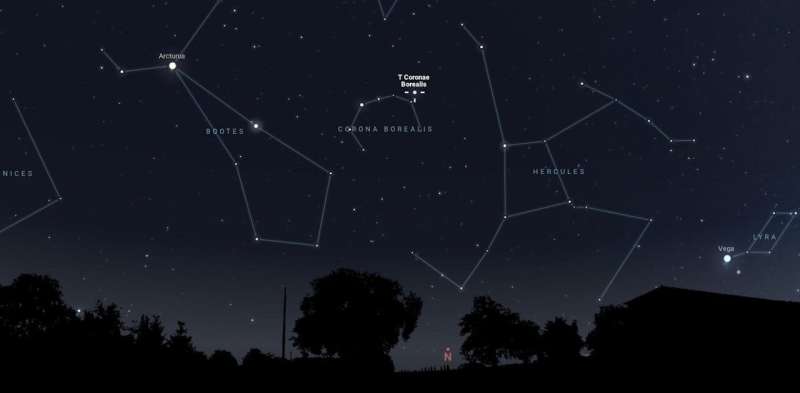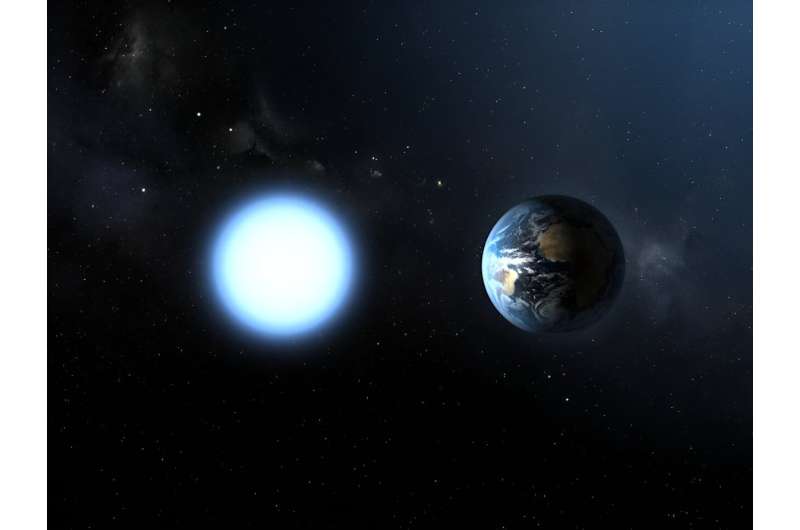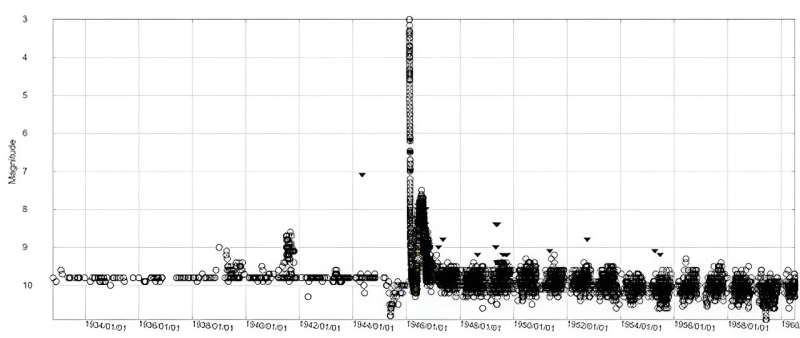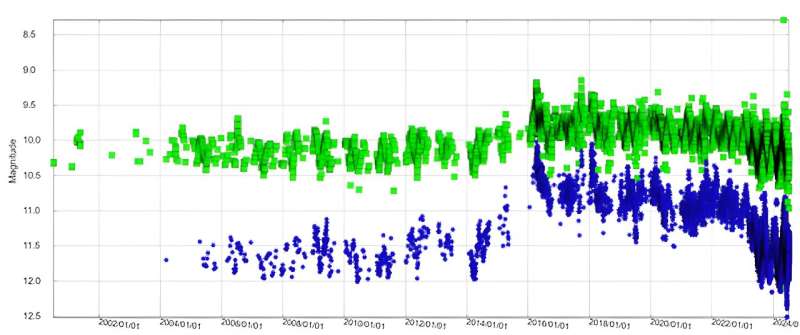
Credit: Stellarium Web Online Star Map
In a few nights, a “new star” or nova will appear in the night sky. Although it won’t set the sky ablaze, it’s a unique opportunity to observe a rare event that is usually difficult to predict in advance.
The star in question is T Coronae Borealis (T CrB, pronounced “T Cor Bor”). It is located in the constellation Corona Borealis, which is clearly visible in the northern hemisphere but will also be visible in the northern sky from Australia and Aotearoa New Zealand over the coming months.
Most of the time, T CrB, which is 3,000 light-years away, is too faint to be observed. But about once every 80 years, it erupts.
A new star suddenly appears, but not for long. A few nights later, it quickly fades and disappears into the darkness again.
A burst of life
At the height of their lives, stars are powered by nuclear fusion reactions deep in their cores. Most often, hydrogen converts to helium, creating enough energy to keep the star stable and bright for billions of years.
But T CrB is well past its prime and is now nothing more than a stellar remnant known as a white dwarf. Its internal nuclear fire has been extinguished, allowing gravity to compress the dead star considerably.

A white dwarf is about the same size as Earth but about 300,000 times more massive, generating a powerful gravitational field. Credit: ESA/NASA
T CrB also has a stellar companion: a red giant that has swollen as it enters old age. The white dwarf absorbs the swollen gas from the red giant, forming what is called an accretion disk around the dead star.
Matter accumulates on an already extremely compressed star, causing a continuous increase in pressure and temperature. Conditions become so extreme that they resemble those that might have been found inside the star’s core. Its surface ignites in an uncontrollable thermonuclear reaction.
When this happens, the energy released causes T CrB to shine 1,500 times brighter than usual. Here on Earth, it appears briefly in the night sky. With this dramatic reset, the star has now expelled the gas and the cycle can begin again.
How do we know it’s due?
T CrB is the brightest of a rare class of recurring novae that repeat every hundred years, a time scale that allows astronomers to detect their recurring nature.
Only ten recurring novae are currently known, although other novae may be recurring, but on much larger time scales and less easily tracked.
The earliest known date of the T CrB eruption is in 1217, based on observations recorded in a medieval monastic chronicle. It is remarkable that astronomers can now predict its eruptions with such accuracy, provided the nova follows its usual pattern.
The two most recent flares of the star, in 1866 and 1946, showed exactly the same characteristics. About ten years before the flare, the luminosity of T CrB increased slightly (this is called an elevated state), followed by a brief dimming or decrease about a year after the explosion.

Light curve of T CrB during the 1946 nova event, compiled from 6,597 observations recorded by the American Association of Variable Star Observers (AAVSO). Credit: Museums Victoria/AAVSO
T CrB entered its peak phase in 2015 and the pre-eruption dip was spotted in March 2023, putting astronomers on alert. The causes of these phenomena are just some of the current mysteries surrounding T CrB.

Recent T CrB brightness curve plotted through two filters or bands – V (green) and B (blue) – and compiled from 95,901 AAVSO observations. It is possible, particularly in the B band, to see T CrB enter the high state in 2015 and currently experience the pre-eruption trough. Credit: Museums Victoria/AAVSO
How can I see it?
Start stargazing now! It is advisable to get used to seeing the Corona Borealis as it currently is, in order to fully enjoy the impact of the “new” star.
Corona Borealis currently reaches its best viewing position (known as a meridional transit) around 8:30-9pm local time in Australia and Aotearoa. The further north you are, the higher the constellation will be in the sky.
The nova is expected to be reasonably bright (magnitude 2.5): about as bright as Imai (Delta Crucis), the fourth brightest star in the Southern Cross. So it will be easy to see even from a city, if you know where to look.
We won’t have much time
We won’t have much time left once it’s gone. The maximum brightness will only last a few hours; in a week, the T CrB will be gone and you’ll need binoculars to see it.
It will almost certainly be an amateur astronomer who alerts the professional community when T CrB bursts.
These dedicated and knowledgeable people regularly monitor the stars from their backyards just in case, filling a significant gap in night sky observations.
The American Association for Variable Star Observations (AAVSO) has recorded more than 270,000 observations of T CrB alone. Amateur astronomers collaborate here and around the world to continually monitor T CrB for early signs of an eruption.
Hopefully the nova will erupt as expected before October, because after that the Corona Borealis will leave our evening skies in the Southern Hemisphere.
Provided by The Conversation
This article is republished from The Conversation under a Creative Commons license. Read the original article.![]()
Quote:Once-in-a-lifetime explosion about to create ‘new’ star in the sky (2024, July 9) retrieved July 10, 2024 from https://phys.org/news/2024-07-lifetime-explosion-star-sky.html
This document is subject to copyright. Apart from any fair dealing for the purpose of private study or research, no part may be reproduced without written permission. The content is provided for informational purposes only.